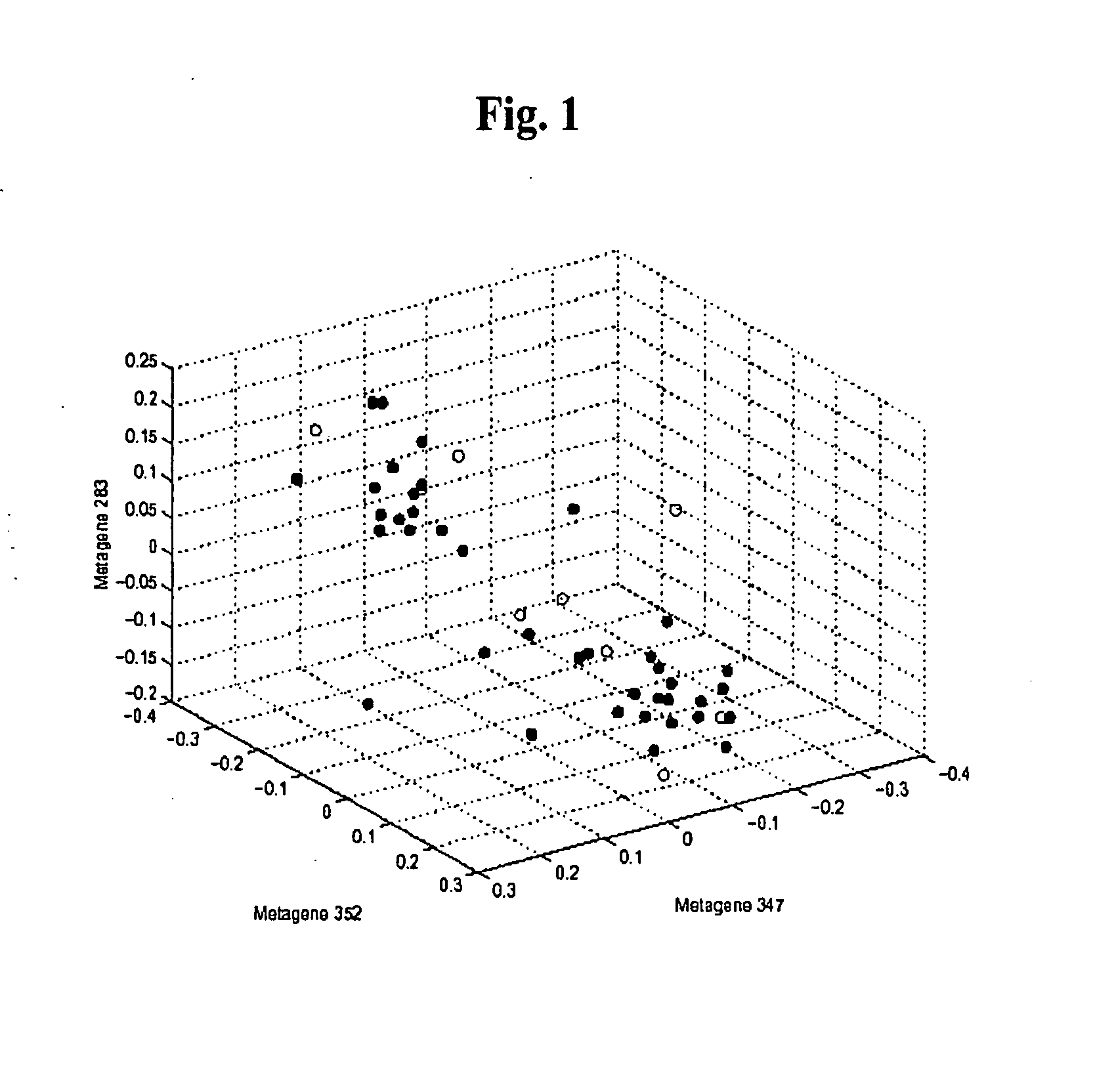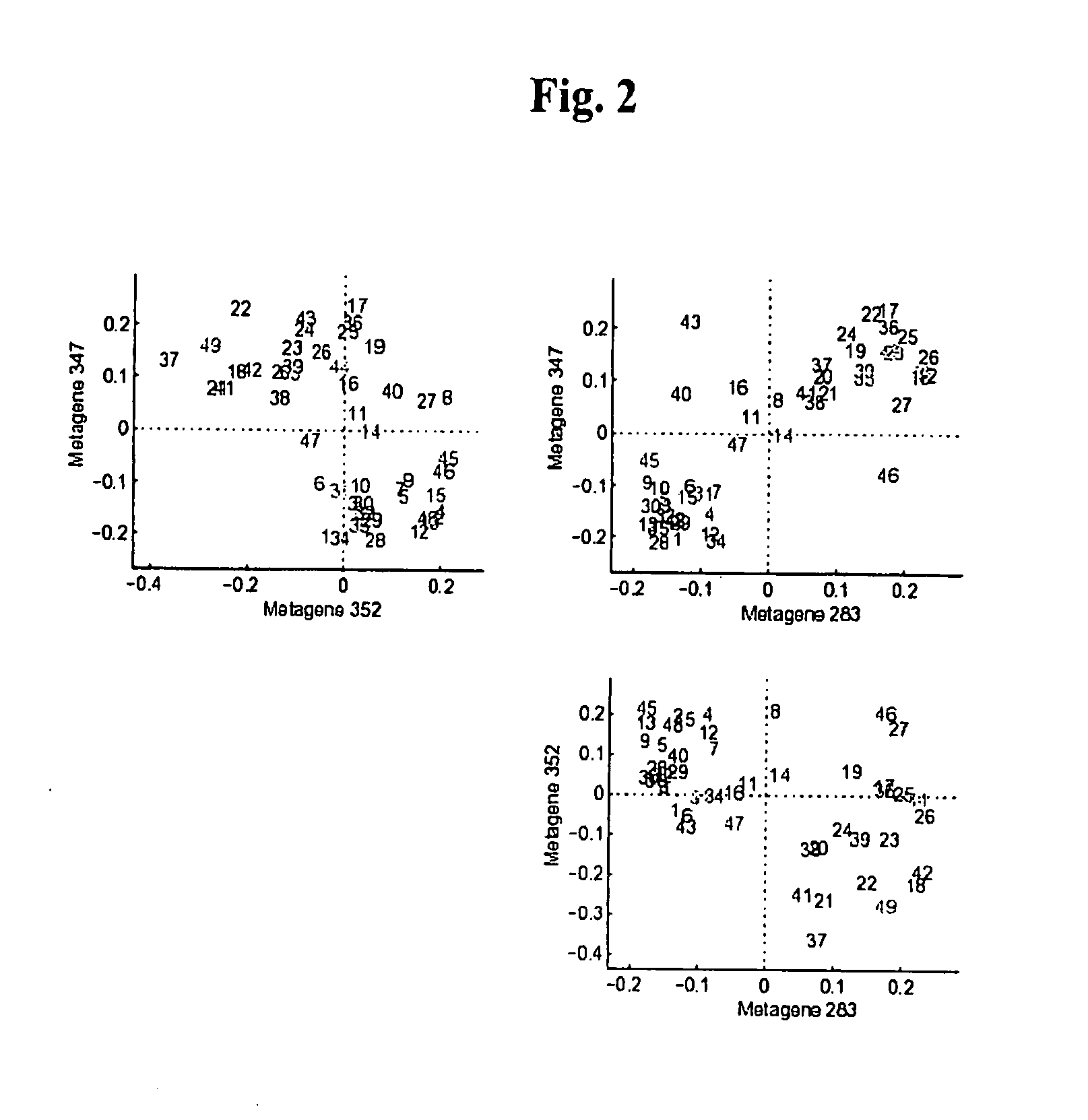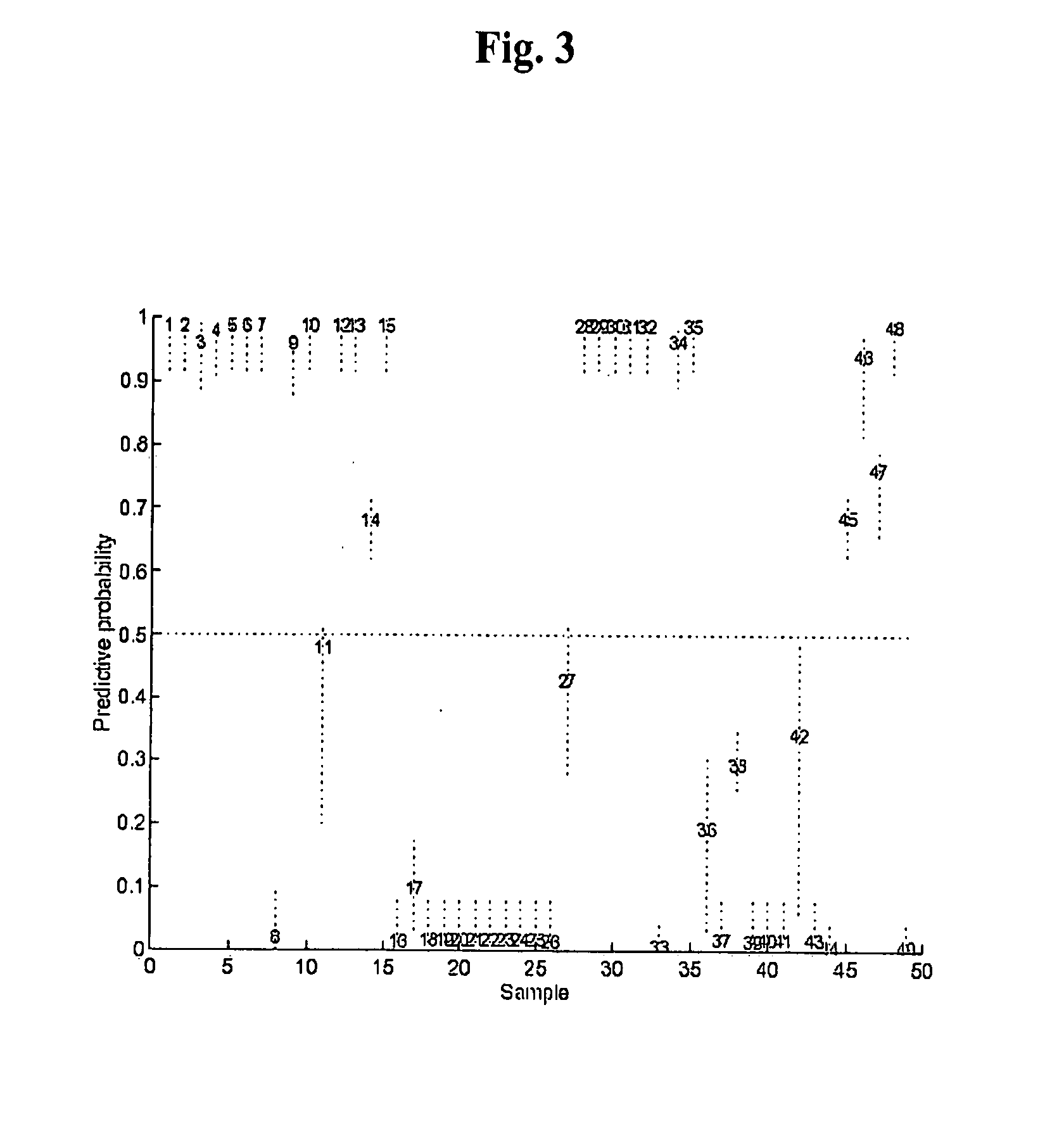Prediction of estrogen receptor status of breast tumors using binary prediction tree modeling
a prediction tree and estrogen receptor technology, applied in the field of classification tree models, can solve problems such as multiple predictors, and achieve the effect of effective self-pruning
- Summary
- Abstract
- Description
- Claims
- Application Information
AI Technical Summary
Benefits of technology
Problems solved by technology
Method used
Image
Examples
example 1
Metagene Expression Profiling to Predict Estrogen Receptor Status of Breast Cancer Tumors
[0041] This example illustrates not only predictive utility but also exploratory use of the tree analysis framework in exploring data structure. Here, the tree analysis is used to predict estrogen receptor (“ER”) status of breast tumors using gene expression data. Prior analyses of such data involved binary regression models which utilized Bayesian generalized shrinkage approaches to factor regression. Specifically, prior statistical models involved the use of probit linear regression linking principal components of selected subsets of genes to the binary (ER positive / negative) outcomes. See West, M., Blanchette, C., Dressman, H., Ishida, S., Spang, R., Zuzan, H., Marks, J. R. and Nevins, J. R. Utilization of gene expression profiles to predict the clinical status of human breast cancer. Proc. Natl. Acad. Sci., 98, 11462-11467 (2001). However, the tree model presents some distinct advantages ov...
PUM
| Property | Measurement | Unit |
|---|---|---|
| threshold | aaaaa | aaaaa |
| physical state | aaaaa | aaaaa |
| purity | aaaaa | aaaaa |
Abstract
Description
Claims
Application Information
 Login to View More
Login to View More - R&D
- Intellectual Property
- Life Sciences
- Materials
- Tech Scout
- Unparalleled Data Quality
- Higher Quality Content
- 60% Fewer Hallucinations
Browse by: Latest US Patents, China's latest patents, Technical Efficacy Thesaurus, Application Domain, Technology Topic, Popular Technical Reports.
© 2025 PatSnap. All rights reserved.Legal|Privacy policy|Modern Slavery Act Transparency Statement|Sitemap|About US| Contact US: help@patsnap.com



